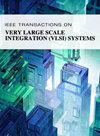BTI Aging Analysis and Mitigation for Differential Input In-Memory Computing SRAMs
IF 3.1
2区 工程技术
Q2 COMPUTER SCIENCE, HARDWARE & ARCHITECTURE
IEEE Transactions on Very Large Scale Integration (VLSI) Systems
Pub Date : 2025-07-16
DOI:10.1109/TVLSI.2025.3585027
引用次数: 0
Abstract
SRAM-based in-memory computing (IMC) is a promising approach to overcome the bottleneck of traditional Von Neumann architectures that suffer from data transfer delay and energy inefficiency. Aging phenomena and process variations are a serious reliability and lifetime concern that may impact SRAM-based IMC array architectures, similar to conventional SRAM arrays. Bias temperature instability (BTI) is a dominant aging mechanism that degrades transistor performance and negatively affects the analog nature of the IMC computations. In this work, we present a simulation framework for the joined analysis of aging and process variation influence on IMC reliable operation. We perform, through SPICE simulations, an extensive BTI aging analysis on differential input SRAM-based IMC array architectures under different operating conditions and considering process variations. The simulation results show a substantial impact of aging on their reliability. Furthermore, we present an aging mitigation technique to maintain reliability and extend the lifetime of these circuits. Aging mitigation is achieved by periodically reconfiguring the active current paths in the IMC cells, with negligible cost on throughput and power consumption. The simulation results show that up to 68% of the IMC circuits can lose accuracy after three operating years, depending on the operating conditions. The aging mitigation technique effectively reduces the percentage of circuits that lose accuracy by up to 72% and decreases their degradation rate, essentially extending by more than差分输入内存计算ram的BTI老化分析与缓解
基于sram的内存计算(IMC)是一种很有前途的方法,可以克服传统冯·诺依曼架构的瓶颈,即数据传输延迟和能量效率低下。老化现象和工艺变化是一个严重的可靠性和寿命问题,可能会影响基于SRAM的IMC阵列架构,类似于传统的SRAM阵列。偏置温度不稳定性(BTI)是一种主要的老化机制,它会降低晶体管的性能,并对IMC计算的模拟性质产生负面影响。在本工作中,我们提出了一个模拟框架,用于联合分析老化和工艺变化对IMC可靠运行的影响。通过SPICE模拟,我们对不同操作条件下基于sram的差分输入IMC阵列架构进行了广泛的BTI老化分析,并考虑了工艺变化。仿真结果表明,老化对其可靠性有较大影响。此外,我们提出了一种老化减缓技术,以保持这些电路的可靠性和延长寿命。通过定期重新配置IMC单元中的有源电流路径,可以实现老化缓解,而吞吐量和功耗的成本可以忽略不计。仿真结果表明,根据工作条件的不同,高达68%的IMC电路在工作3年后会失去精度。老化减缓技术有效地减少了高达72%的电路失去精度的百分比,并降低了它们的退化率,基本上延长了超过9.3倍的可靠寿命。
本文章由计算机程序翻译,如有差异,请以英文原文为准。
求助全文
约1分钟内获得全文
求助全文
来源期刊
CiteScore
6.40
自引率
7.10%
发文量
187
审稿时长
3.6 months
期刊介绍:
The IEEE Transactions on VLSI Systems is published as a monthly journal under the co-sponsorship of the IEEE Circuits and Systems Society, the IEEE Computer Society, and the IEEE Solid-State Circuits Society.
Design and realization of microelectronic systems using VLSI/ULSI technologies require close collaboration among scientists and engineers in the fields of systems architecture, logic and circuit design, chips and wafer fabrication, packaging, testing and systems applications. Generation of specifications, design and verification must be performed at all abstraction levels, including the system, register-transfer, logic, circuit, transistor and process levels.
To address this critical area through a common forum, the IEEE Transactions on VLSI Systems have been founded. The editorial board, consisting of international experts, invites original papers which emphasize and merit the novel systems integration aspects of microelectronic systems including interactions among systems design and partitioning, logic and memory design, digital and analog circuit design, layout synthesis, CAD tools, chips and wafer fabrication, testing and packaging, and systems level qualification. Thus, the coverage of these Transactions will focus on VLSI/ULSI microelectronic systems integration.

 求助内容:
求助内容: 应助结果提醒方式:
应助结果提醒方式:


